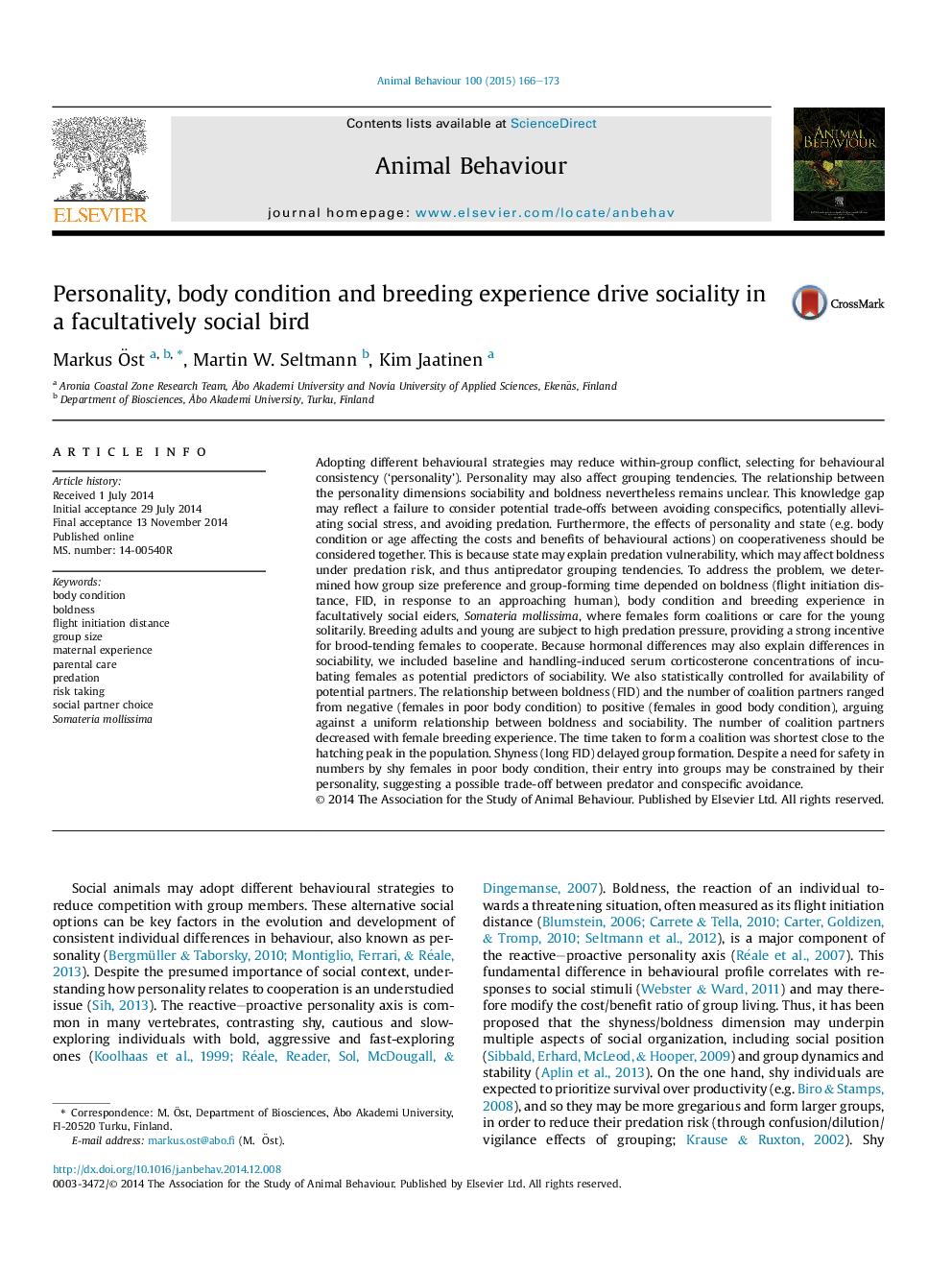| کد مقاله | کد نشریه | سال انتشار | مقاله انگلیسی | نسخه تمام متن |
|---|---|---|---|---|
| 8490232 | 1645492 | 2015 | 8 صفحه PDF | دانلود رایگان |
عنوان انگلیسی مقاله ISI
Personality, body condition and breeding experience drive sociality in a facultatively social bird
ترجمه فارسی عنوان
وضعیت شخصیت، وضعیت بدن و تجربه پرورش حیوانات، اجتماعی بودن را در یک پرنده اجتماعی موثر قرار می دهند
دانلود مقاله + سفارش ترجمه
دانلود مقاله ISI انگلیسی
رایگان برای ایرانیان
کلمات کلیدی
موضوعات مرتبط
علوم زیستی و بیوفناوری
علوم کشاورزی و بیولوژیک
علوم دامی و جانورشناسی
چکیده انگلیسی
Adopting different behavioural strategies may reduce within-group conflict, selecting for behavioural consistency ('personality'). Personality may also affect grouping tendencies. The relationship between the personality dimensions sociability and boldness nevertheless remains unclear. This knowledge gap may reflect a failure to consider potential trade-offs between avoiding conspecifics, potentially alleviating social stress, and avoiding predation. Furthermore, the effects of personality and state (e.g. body condition or age affecting the costs and benefits of behavioural actions) on cooperativeness should be considered together. This is because state may explain predation vulnerability, which may affect boldness under predation risk, and thus antipredator grouping tendencies. To address the problem, we determined how group size preference and group-forming time depended on boldness (flight initiation distance, FID, in response to an approaching human), body condition and breeding experience in facultatively social eiders, Somateria mollissima, where females form coalitions or care for the young solitarily. Breeding adults and young are subject to high predation pressure, providing a strong incentive for brood-tending females to cooperate. Because hormonal differences may also explain differences in sociability, we included baseline and handling-induced serum corticosterone concentrations of incubating females as potential predictors of sociability. We also statistically controlled for availability of potential partners. The relationship between boldness (FID) and the number of coalition partners ranged from negative (females in poor body condition) to positive (females in good body condition), arguing against a uniform relationship between boldness and sociability. The number of coalition partners decreased with female breeding experience. The time taken to form a coalition was shortest close to the hatching peak in the population. Shyness (long FID) delayed group formation. Despite a need for safety in numbers by shy females in poor body condition, their entry into groups may be constrained by their personality, suggesting a possible trade-off between predator and conspecific avoidance.
ناشر
Database: Elsevier - ScienceDirect (ساینس دایرکت)
Journal: Animal Behaviour - Volume 100, February 2015, Pages 166-173
Journal: Animal Behaviour - Volume 100, February 2015, Pages 166-173
نویسندگان
Markus Ãst, Martin W. Seltmann, Kim Jaatinen,
